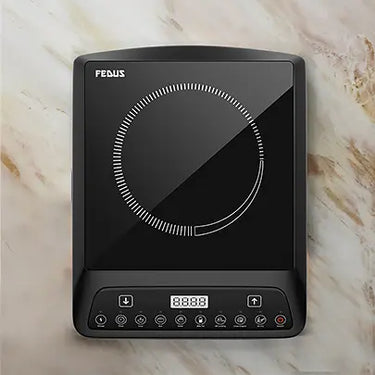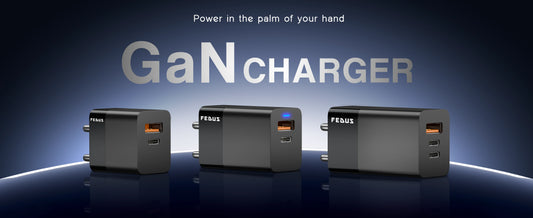As technology continues to evolve at a rapid pace, so do the ways we experience entertainment, especially gaming. In the quest for realism, immersion, and performance, every component of your gaming setup plays a crucial role — none more so than the humble HDMI cable. For years, HDMI (High-Definition Multimedia Interface) cables have been the backbone for connecting devices, ensuring the transfer of both video and audio signals. But in the world of gaming, HDMI 2.1 has brought about a revolutionary shift, unlocking features that redefine what’s possible. Let's dive deep into how HDMI 2.1 is shaping the future of gaming, from supporting 4K at 120Hz to what lies beyond.
The Rise of HDMI 2.1: What’s Changed?
Before we get into the specifics, it’s important to understand what makes HDMI 2.1 stand out from its predecessors. Released in 2017, HDMI 2.1 is the latest version of the HDMI standard, designed to support the ever-increasing demands of modern tech — especially gaming. The key difference lies in its massive increase in bandwidth, from 10.2 Gbps (HDMI 2.0) to an astounding 48 Gbps. This jump allows HDMI 2.1 to deliver higher resolutions, faster refresh rates, and better overall picture quality without compression.
4K at 120Hz: The Gamer’s Dream
For gaming enthusiasts, the combination of 4K resolution and 120Hz refresh rate is nothing short of groundbreaking. HDMI 2.1 allows for seamless 4K gaming at 120Hz, a feature that was previously out of reach for many players. But what does this actually mean?
- 4K Resolution: With four times the pixels of Full HD (1080p), 4K offers a level of detail and sharpness that pulls you deeper into the virtual worlds of your favorite games. Whether you’re exploring an expansive open-world RPG or darting through an intense first-person shooter, 4K ensures that every detail is crisp and lifelike. With HDMI 2.1, your console or PC can transmit 4K images at a high bandwidth, ensuring smooth and high-quality graphics.
- 120Hz Refresh Rate: While most older displays are limited to 60Hz, which refreshes the image 60 times per second, HDMI 2.1 supports 120Hz, meaning your display refreshes 120 times per second. This results in ultra-smooth gameplay, especially important in fast-paced games where reaction time is critical. Racing games, fighting games, and first-person shooters all benefit immensely from higher refresh rates, providing an edge over players stuck with lower refresh rates. You’ll notice less motion blur, reduced input lag, and overall smoother visuals.
Together, 4K at 120Hz creates a gaming experience that feels more responsive and visually stunning than ever before. For competitive gamers and those who crave the best visual quality, this is the future.
Low Latency and Faster Response Times
Another game-changing feature of HDMI 2.1 is its ability to minimize latency, thanks to Auto Low Latency Mode (ALLM). ALLM automatically switches your TV or monitor to its lowest latency mode when you start a game, ensuring your input is reflected on screen as quickly as possible. This means you can press a button, and the action will appear almost instantly, making the gaming experience more responsive and immersive.
For competitive gamers, every millisecond counts. HDMI 2.1 allows your console or PC to communicate with the display to optimize the experience, ensuring minimal lag — a must-have feature for esports enthusiasts.
Variable Refresh Rate (VRR): A Game-Changer for Smoothness
One of the most exciting features HDMI 2.1 brings is Variable Refresh Rate (VRR). With VRR, your display’s refresh rate can dynamically adjust to the frame rate of the game. This eliminates the dreaded screen tearing — where the image is split into uneven parts due to mismatched frame rates — and provides a smoother experience.
If you’re playing graphically intense games, frame rates can fluctuate, especially during fast action sequences. VRR ensures that even when the frame rate drops, the display continues to show fluid motion without tearing, resulting in a seamless, immersive gaming experience.
Beyond 4K: 8K and the Future of Gaming
While 4K at 120Hz is already a significant leap forward, HDMI 2.1 isn’t just about the present. It’s also future-proofing our setups for the next big thing: 8K resolution.
While 8K content is still in its early stages, HDMI 2.1 supports 8K resolution at 60Hz, which means that as the technology becomes more widespread, you'll be ready. Though 8K gaming is not yet a mainstream reality, it’s an exciting glimpse into the future of gaming. As developers push for even more detail and realism, 8K will eventually become a key player in the gaming space, and HDMI 2.1 is built to support that transition.
HDMI 2.1 and Next-Gen Consoles
HDMI 2.1 has become a key feature in the new generation of gaming consoles. The PlayStation 5 and Xbox Series X both support HDMI 2.1, enabling gamers to experience 4K at 120Hz, as well as faster loading times and improved graphics. For example, the Xbox Series X can push games like Halo Infinite or Forza Horizon 5 in 4K at 120Hz when paired with the right HDMI 2.1-compatible display.
If you’re looking to maximize the potential of these consoles, an HDMI 2.1 cable is non-negotiable. It ensures that the visuals and performance capabilities of these consoles are not bottlenecked by older HDMI standards, offering gamers the best possible experience.
HDMI 2.1 in PC Gaming
While consoles are getting all the buzz, PC gamers also stand to benefit greatly from HDMI 2.1. Many high-end gaming monitors now support HDMI 2.1, which means PC gamers can take full advantage of high frame rates (such as 120Hz or even 144Hz) at 4K resolution. For those with powerful graphics cards like the NVIDIA RTX 3000 series or AMD Radeon RX 6000 series, HDMI 2.1 is a vital link that unlocks the full potential of these components, allowing for smooth, high-quality visuals that can elevate gameplay.
Additionally, HDMI 2.1 is a boon for those who want to take advantage of ray tracing technology, as the higher bandwidth supports the immense data transfer required to render realistic lighting and shadows.
Conclusion: HDMI 2.1 is the Gateway to the Future of Gaming
The advent of HDMI 2.1 has undoubtedly ushered in a new era of gaming. With its support for 4K at 120Hz, VRR, ALLM, and 8K resolution, HDMI 2.1 ensures that gamers can enjoy smoother, more immersive, and visually stunning gameplay. As the gaming world continues to evolve with more demanding graphics, faster response times, and higher resolutions, HDMI 2.1 is the technology that will keep your setup future-ready.
Whether you're a competitive player looking to reduce latency, a casual gamer wanting to enjoy crisp visuals, or someone ready to experience 8K gaming, HDMI 2.1 offers the flexibility and power to meet those needs. So, if you haven't yet upgraded your cables, it might just be time to make the leap — your gaming experience will thank you.









